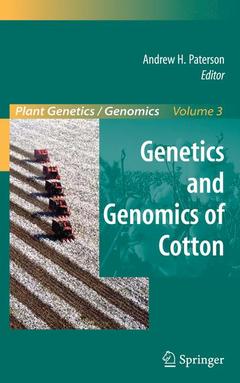Description
Genetics and Genomics of Cotton, Softcover reprint of the original 1st ed. 2009
Plant Genetics and Genomics: Crops and Models Series, Vol. 3
Coordinator: Paterson Andrew H.
Language: English
Subjects for Genetics and Genomics of Cotton:
Keywords
DNA; biodiversity; bioinformatics; cotton; ecosystem; evolution; genes; genetic engineering; genetics; quality; sustainability
Publication date: 08-2016
Support: Print on demand
Publication date: 04-2009
518 p. · 15.5x23.5 cm · Hardback
Description
/li>Contents
/li>Comment
/li>
A few members of the Gossypium (cotton) genus are cultivated for the production of elongated single-celled fibers valued worldwide at about $20 billion annually at the farm gate, and which sustain one of the world?s largest industries (textiles) with an annual worldwide economic impact of about $500 billion. In a number of ways, cotton production and the textile industry are closely tied to petrochemical usage. At a practical level, cotton genomics offers both bio-based carbon sequestration alternatives to petrochemical use, and improved sustainability of crop production.
The Gossypium (cotton) also genus presents novel opportunities to advance our understanding of the natural world and its organic evolution. In particular, the evolution of cultivated cottons from their wild ancestors has involved a fascinating series of events that offer scientists the opportunity to dissect the evolution of a novel organ, the ?lint fiber?, and also to unravel the consequences of polyploidy, both for the generation of biodiversity and for crop productivity.
In this book, advances of the past decade will be summarized and synthesized to elucidate the current state of knowledge of the structure, function, and evolution of the Gossypium genome, and progress in the application of this knowledge to cotton improvement. This book will address five broad topics. First, as a backdrop for all studies of the genus, it is important to understand the naturally-occurring diversity in the genus, its organization and distribution, and its evolutionary history. Of special importance is the formation of a single polyploid from two (among 8) diploid genome types, the radiation of this polyploid, and the domestication and improvement of two (among 5 extant) polyploid species.

